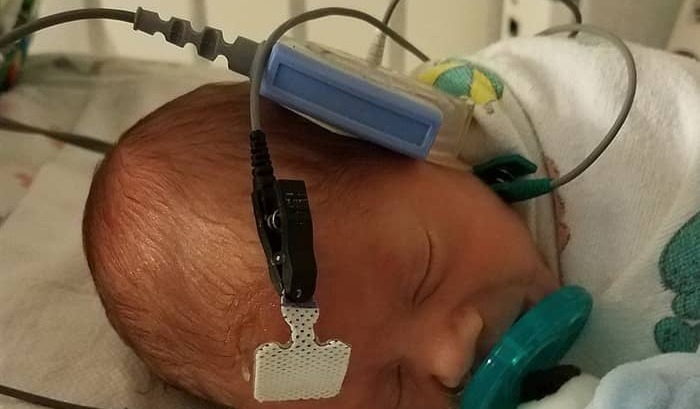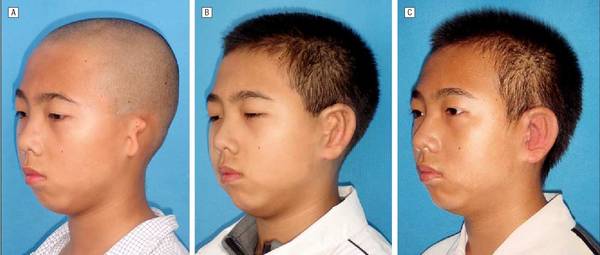Congenital deafness is hearing loss present at the time of the child’s birth due to genetic reasons or complications during pregnancy. In some cases, deafness due to genetic factors may not be present at birth but occur a little later.
A hearing test in newborns within one month of birth is very important to detect congenital deafness. The neonatal hearing screening test is non-invasive and indicates the child’s hearing ability.
Table of Contents
- Is Congenital Deafness Permanent?
- How Do I Know If My Child Has A Hearing Problem?
- What Are The Causes Of Congenital Deafness?
- How Is Congenital Deafness Diagnosed?
- What Are The Congenital Deafness Treatment Options?
Is Congenital Deafness Permanent?
Once the neonatal hearing screening test indicates signs of deafness, the doctor evaluates and determines the cause of the deafness. But if the deafness is due to sensorineural hearing loss or defect in the inner ear, auditory nerve, or the central auditory pathway, then it is a permanent hearing loss.
If it’s a case of conductive hearing loss or the cause of deafness is in the outer ear or middle ear, then in most cases, corrective surgery can restore the child’s hearing.
How Do I Know If My Child Has A Hearing Problem?
As mentioned above, hearing screening in newborns is very important. The earlier the cause of the deafness is diagnosed and treated, the higher the chance of the child developing speech and communication skills. Parents can read this blog to know the signs of hearing loss in children.
What Are The Causes Of Congenital Deafness?
There are two types of congenital deafness:
• Hereditary deafness
• Non-hereditary deafness
Causes Of Genetic Deafness
Genetic hearing loss or deafness is due to the gene inherited by the baby from one or both parents.
Autosomal Dominant Hearing Loss
In the case of Autosomal dominant hearing loss, one of the parents has a dominant gene and also has a hearing loss. There are 50% chances of the child having congenital deafness. If both the parents carry a dominant gene, the probability of the child having hearing loss is much higher.
- Waardenburg syndrome
- Treacher Collins syndrome
- Crouzon syndrome
Autosomal Recessive Hearing Loss
In this case, both parents hear normally but do have a recessive gene that passes on to the child. The probability of the child having a hearing loss is around 25%.
- Pendred Syndrome
- Usher syndrome
- Down syndrome
X-linked Hearing Loss
In this case, the mother carries the recessive gene on her chromosomes and passes the characteristics to her children.
- Alport syndrome
Some of the common causes of non-hereditary congenital hearing loss:
- Viral infections such as rubella/measles, cytomegalovirus, or herpes simplex virus
- Premature birth
- Low birth weight
- Prenatal infections
- Injuries during delivery or birth injuries
- Teratogenic drugs. These drugs cause interference in the regular development of the fetus. Many over the counter medicines are teratogenic.
- Toxins consumed by the mother during pregnancy including drugs and alcohol
- Malformation of the ear. (Microtia or Anotia)
- High blood pressure during pregnancy
- Baby not getting sufficient oxygen, known as anoxia.
How Is Congenital Deafness Diagnosed?
Even if the newborn baby responds to sound by turning its head, this does not indicate that the baby’s hearing is perfect and does not require further testing. There could be a remote chance of the baby having mild to moderate congenital deafness at certain frequencies. A detailed test is necessary after a couple of months to determine if the hearing is perfect.
A test at birth or within one month of birth is sufficient for early diagnosis. But children should undergo hearing tests at regular intervals to eliminate possibilities of late onset or progressive hearing loss.
A preliminary physical examination can detect congenital ear canal atresia or aural atresia. In this case, the ear canal dos not develop normally and restricts or blocks sound reaching the middle ear.
Hearing Test In Newborns
Health agencies recommend the following hearing tests in newborns.
Otoacoustic Emission (OAE)
The Otoacoustic emission test is very common and a quick method to detect hearing loss. The OAE device presents clicks in the child’s ear and measures the echo or the response of the ear to the clicks. The OAE test checks the functioning of the outer ear, middle ear, and outer hair cells. The OAE test does not check the auditory nerve or the auditory brainstem

Auditory Brainstem Response (ABR)
The ABR test is an important part of the neonatal hearing screening protocol. It’s possible that a child passing the OAE test may not pass the ABR test. This test measures the response of the auditory nerve and the brain, which is not covered by the OAE test.
The Automated Auditory Brainstem Response instrument measures the response to the clicks. The electrodes placed on the baby’s head pick up the response that is analyzed and displayed.
What Are The Congenital Deafness Treatment Options?
In the case of congenital conductive hearing loss, surgical procedures can rectify most of the cases of malformation of the outer and the middle ear. In the case of atresia, the surgeon creates the ear canal and widens it as required (Stenosis).
In the case of microtia, where the outer visible ear is smaller than normal and not formed And Anotia, where the outer visible ear is missing, the surgeon reconstructs the outer ear.

The other method of treating congenital deafness is to use hearing devices.
- Hearing Aids,
- Cochlear Implants
- Auditory Brainstem Implants
Hearing Aids For Congenital Deafness
Hearing aids are the simplest and the most convenient amplification devices to treat deafness. All leading brands offer a wide range of hearing aids to suit children with mild to profound hearing loss.
Manufacturers also offer pediatric hearing aids for infants, these behind the ear hearing aids are small in size and fit comfortably behind the child’s ear. Some models have LED indicators for the parents to know if the hearing aid is working.
The child should meet the audiologist every three months. Since the child is growing, the size of the ear canal and the outer ear will also grow in size. The old mold if loose should be replaced to avoid feedback. A periodic check-up also helps the audiologist to check if the hearing loss is progressive, accordingly, adjustment to the hearing aid output is required.
Cochlear Implants For Congenital Deafness
In certain cases, hearing aids do not produce the desired results. Low speech discrimination is one of the reasons. In this case, Cochlear Implants are the right choice. The doctor along with the audiologist will decide on the suitability.
A cochlear implant bye-passes the external and the middle ear and directly delivers the signal to the cochlea of the inner ear. Know how a cochlear implant works.
Auditory Brainstem Implants
In the case of Auditory Brainstem Implants, sound signals processed by the auditory brainstem implant bypass the cochlear nerve and stimulate the hearing pathways in the brainstem. A brainstem implant is useful in cases, wherever hearing aids and cochlear implants do not help.
The electronic hearing devices restore the ability to hear but are “aids” and can assist the child with congenital deafness to hear. It is important for the parents to teach children sign language at the earliest. The use of a hearing device assisted by sign language will help children communicate better and interact and socialize with their relatives and friends.
Reference:
https://www.ncbi.nlm.nih.gov/pmc/articles/PMC5675031/
https://www.ncbi.nlm.nih.gov/pmc/articles/PMC5222593/
